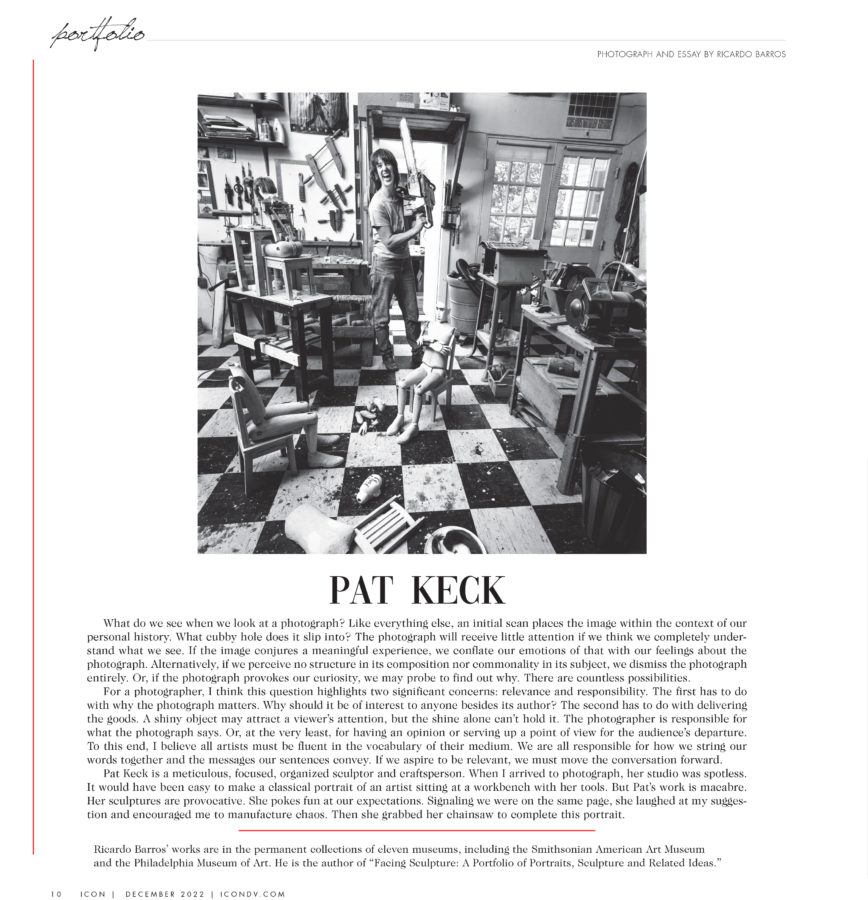Pat Keck
What do we see when we look at a photograph? Like everything else, an initial scan places the image within the context of our personal history. What cubby hole does it slip into? The photograph will receive little attention if we think we completely understand what we see. If the image conjures a meaningful experience, we conflate our emotions of that with our feelings about the photograph. Alternatively, if we perceive no structure in its composition nor commonality in its subject, we dismiss the photograph entirely. Or, if the photograph provokes our curiosity, we may probe to find out why. There are countless possibilities.
For a photographer, I think this question highlights two significant concerns: relevance and responsibility. The first has to do with why the photograph matters. Why should it be of interest to anyone besides its author? The second has to do with delivering the goods. A shiny object may attract a viewer’s attention, but the shine alone can’t hold it. The photographer is responsible for what the photograph says. Or, at the very least, for having an opinion or serving up a point of view for the audience’s departure. To this end, I believe all artists must be fluent in the vocabulary of their medium. We are all responsible for how we string our words together and the messages our sentences convey. If we aspire to be relevant, we must move the conversation forward.
Pat Keck is a meticulous, focused, organized sculptor and craftsperson. When I arrived to photograph, her studio was spotless. It would have been easy to make a classical portrait of an artist sitting at a workbench with her tools. But Pat’s work is macabre. Her sculptures are provocative. She pokes fun at our expectations. Signaling we were on the same page, she laughed at my suggestion and encouraged me to manufacture chaos. Then she grabbed her chainsaw to complete this portrait.

